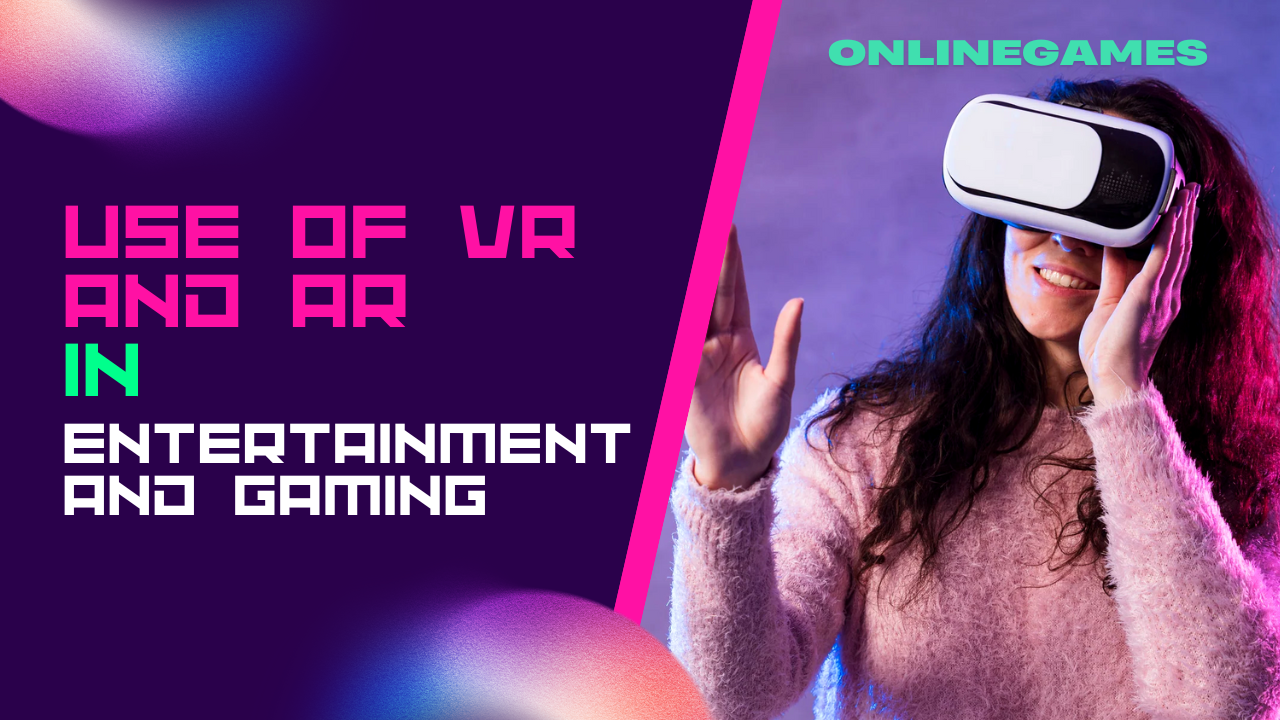Virtual Reality (VR) and Augmented Reality (AR) have significantly transformed the landscape of entertainment and gaming, offering immersive experiences that blur the lines between virtual and real worlds. These technologies have revolutionized how users interact with digital content, creating new opportunities for storytelling, gameplay, and interactive experiences.
VR in Entertainment and Gaming
Immersive Gaming Experiences
VR has brought gaming to a whole new level by immersing players in virtual environments that they can explore and interact with. Unlike traditional gaming, where players view the action through a screen, VR allows them to physically move within the game space and interact with objects and characters. This level of immersion enhances gameplay by making it more engaging and realistic.
Games like “Beat Saber” and “Half-Life: Alyx” have showcased the potential of VR in gaming. In “Beat Saber,” players use VR controllers to slash through blocks to the beat of music, offering a physically active gaming experience. “Half-Life: Alyx,” on the other hand, transports players into the iconic Half-Life universe, allowing them to solve puzzles and engage in combat in a fully immersive 3D environment.
Virtual Tours and Simulations
Beyond gaming, VR is used to create virtual tours and simulations that allow users to explore places and scenarios that would otherwise be inaccessible. For example, museums and historical sites can offer virtual tours where visitors can explore exhibits and historical locations from the comfort of their homes. VR simulations are also used in training scenarios, such as flight simulations for pilots or medical simulations for healthcare professionals, providing a safe environment to practice skills and procedures.
Cinematic Experiences
VR has also expanded into cinematic experiences, allowing users to immerse themselves in virtual worlds and narratives. VR films and experiences enable viewers to interact with the storyline, choosing different paths or viewpoints to explore. This interactivity enhances the storytelling experience, making it more engaging and personalized compared to traditional film formats.
AR in Entertainment and Gaming
Enhancing Real-World Experiences
Augmented Reality (AR) enhances real-world experiences by overlaying digital content onto the physical environment. In gaming, AR integrates virtual elements into the user’s surroundings, creating interactive experiences that blend virtual and real-world elements seamlessly.
Mobile AR Applications
AR has gained popularity through mobile applications that use smartphone cameras and sensors to overlay digital information onto the user’s view of the real world. Games like “Pokémon GO” became a global phenomenon by allowing players to discover and catch Pokémon characters in real-world locations using AR technology. This integration of gameplay with real-world exploration enhances user engagement and social interaction.
AR in Advertising and Marketing
AR is also transforming advertising and marketing by allowing brands to create interactive campaigns that engage consumers in new and innovative ways. AR-enabled advertisements can overlay virtual product demonstrations or 3D models onto printed materials or digital screens, giving consumers a more immersive and personalized experience before making a purchase decision.
Future Trends and Innovations
Advancements in Hardware and Software
The future of VR and AR in entertainment and gaming looks promising with ongoing advancements in hardware and software. VR headsets are becoming more lightweight, comfortable, and affordable, making them accessible to a broader audience. AR glasses are also evolving to provide more seamless integration with everyday activities, enhancing user convenience and adoption.
Integration with AI and IoT
Integration with artificial intelligence (AI) and the Internet of Things (IoT) will further expand the capabilities of VR and AR. AI algorithms can personalize gaming experiences based on user preferences and behaviour, while IoT devices can provide real-time data that AR applications can use to enhance interactivity and immersion.
VR and AR have redefined entertainment and gaming by offering immersive experiences that engage users in new and exciting ways. From immersive gaming experiences and virtual tours to interactive AR applications and cinematic storytelling, these technologies continue to push the boundaries of what’s possible in digital entertainment. As hardware improves and technologies integrate further with AI and IoT, the future holds even more potential for VR and AR to transform how we play, learn, and experience the world around us.






